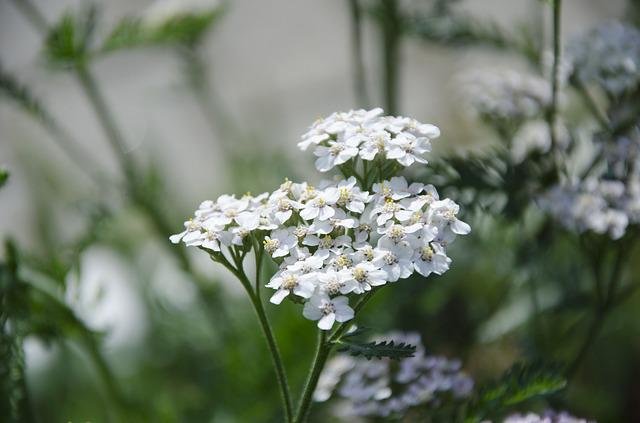
The mother tincture of yarrow, extracted from Achillea millefolium, rebalances the female hormonal system, has a healing action and is anti-haemorrhagic. Let’s find out better.
Properties of yarrow mother tincture
The flowers and leaves of Achillea millefolium contain essential oil (azulene, chamazulene, ß-pinene, caryophyllene), flavonoids, organic acids (caffeic and salicylic), hydrolysable tannins, sterols, lactones, coumarins. These active ingredients give the plant astringent, anti- inflammatory and hemostatic properties.
For internal use, the mother tincture of yarrow is used to stop bleeding, and various bleeding problems due to gingivitis, heavy menstruation or hemorrhoids.
The hydroalcoholic solution of this plant is also used as an antispasmodic remedy, as it helps to relax smooth muscles, in the presence of menstrual pain, colitis associated with abdominal cramps; while for its stomachic properties, it is used to promote digestive and liver function.
Furthermore, the presence of flavonoids (in particular vitexin) gives the plant a rebalancing action of the female hormonal system, useful for all those symptoms related to the premenstrual phase, associated with nervousness, irritability, mood swings, weakness.
The mother tincture of yarrow can also be used for external use to progressively lighten the brown spots on the skin due to an altered metabolism of melanocytes.
It is thought that this lightening property is conferred to the plant by cyanogenic glycosides and flavonoids which actively participate as hydrogen transporters, in the redox processes, mainly towards tyrosine.
Description of the plant
The yarrow grows in the prairies, at the edge of paths and railways, in mountain and sub-mountain pastures, up to 2500m. Perennial herbaceous plant, has roots, has a hairy, simple or branched, leafy, ascending stem that can reach 80 cm in height.
The hairy leaves have a lanceolate and linear outline, an alternating arrangement, and have a slight camphor aroma; the basal ones are usually petiolate; while the others are arranged along the stem and are finely divided into a double comb, hence the name ” yarrow”.
The flowers are small white or pink, collected in a single large umbrella with a diameter of about 15 cm. The fruits are whitish achenes.
How to prepare the mother tincture of yarrow
The “drug” (part used) corresponds to the fresh leaves and flowers, also known as flowering tops, collected from June to September. The fresh plant is used, as it loses most of its properties when dried.
The mother tincture of yarrow is prepared with a drug: solvent weight ratio of 1:10 and an alcohol content of 45% vol.
Usage
Mother tinctures have no contraindications other than those of the plant itself, diluted in a little water, they can be administered to everyone. The alcohol contained in them is thus diluted, so it is harmless. It must not be used in cases of allergies, due to the presence of sesquiterpene lactones.
It should not be taken by children due to the presence of thujone. It can interfere with anticoagulant drugs and those for blood pressure control.
For internal use: 30-50 drops diluted in half a glass of water, 2 – 3 times a day, after main meals. The maximum recommended daily dosage is 120 drops.
For external use: soak a gauze and wet the skin where there are brown spots, twice a day.






